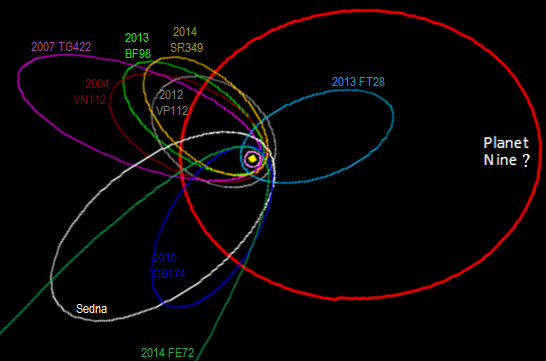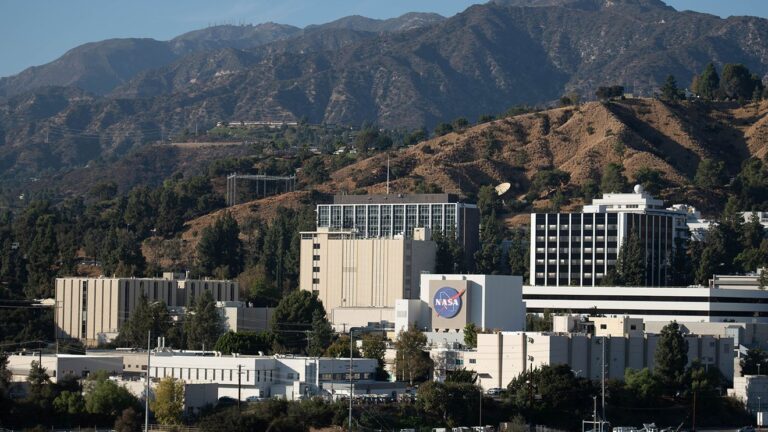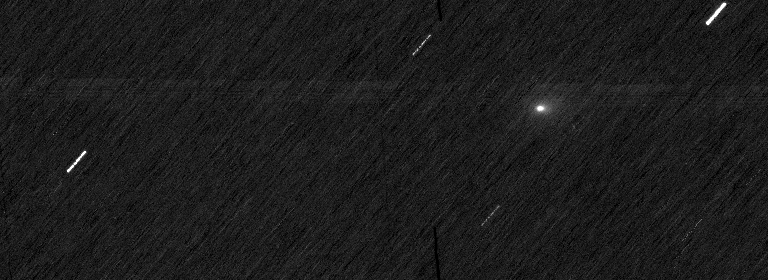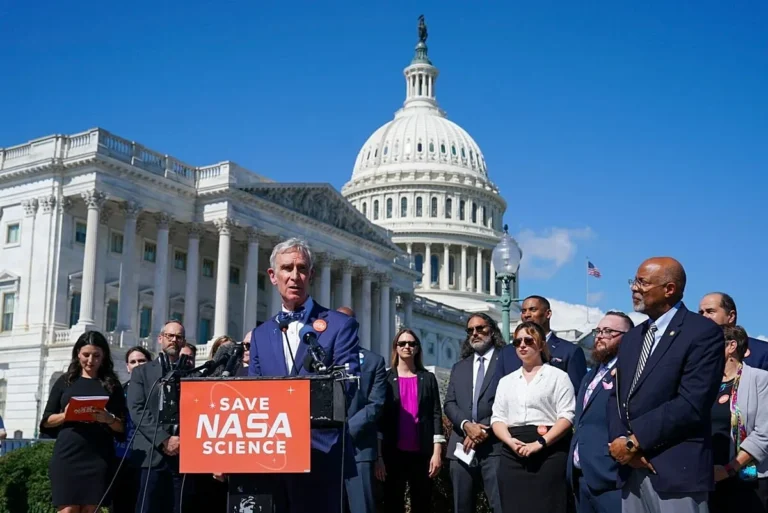Key Takeaways:
Earlier this year an announcement raised a tantalizing possibility: a ninth planet lurking in the outer reaches of our solar system. The announcement turned the astronomy and planetary science world upside down.
Caltech astronomer Michael Brown and theoretical astrophysicist Konstantin Batygin found evidence for a possible 10 Earth mass planet that may be tilting long-orbiting dwarf planets on their sides and shepherding them into clusters far past the orbit of Neptune in highly eccentric orbits. In the last several months, more and more papers have been published about the possible planet and how it might prove an explanation for other strange things happening in our solar system.
At a press conference held this afternoon, at the AAS Division of Planetary Sciences annual meeting in Pasadena Ca, another announcement was made about Planet Nine’s effects on the spin-axis tilt of our Sun. This time, the paper titled Solar Obliquity Induced by Planet Nine is lead by Caltech graduate student Elizabeth Bailey, with Brown and Batygin as co-authors.
We’ve known that the Sun is tilted for about 200 years, but scientists have never known why. Only the catch here is, the Sun isn’t actually tilted at all. We are. To explain this oddity and what’s happening to our solar system we spoke with co-author and theoretical astrophysicist, Konstantin Batygin.
Astronomy Magazine: What’s happening with the alignment in our solar system?
Konstantin Batygin: When planetary systems form, they form from very flat discs. The motion that everything in our entire planetary system forms in a very proto planetary flat disc is one of the basic principles of planetary formation theory. The planetary orbits themselves are fully consistent- If you look at how inclined the planets are with respect to each other they are only inclined by no more than one degree so the planets of the solar system are remarkably flat.
AM: What about the Sun?
KB: The Sun’s rotation was measured for the first time in 1850 and something that was recognized right away as that its spin axis, its north pole, is tilted with respect to the rest of the planets by 6 degrees. So even though 6 degrees isn’t much, it is a big number compared to the mutual planet-planet misalignments. So the Sun is basically an outlier within the solar system. This is a long-standing issue and one that is recognized but people don’t really talk much about it. Everything in the solar system rotates roughly on the same plane except for the most massive object, the Sun which is kind of a big deal.
AM: Why is there this misalignment between the Sun and the orbits of the planets?
KB: We asked ourselves, “what obliquity, what misalignment would Planet Nine induce in the solar system?” because it must induce some. We know that Planet Nine’s orbit in inclined. As a result, when Planet Nine torques the rest of the solar system, the two sort of act as two precessing tops. Planet Nine being in its own plane induced a precession on the remainder of the solar system as if the plane of the solar system was a flat top on the surface of a table.
AM: So Planet Nine’s gravitational influence is forcing the solar system to wobble?
KB: If you imagine that the Sun and the planets were co-planar, meaning they were locked into the same plane 4 billion years ago, and allow the clock to run forward in the presence of Planet Nine, then 4 billion years later the Sun would have been apparently tilted by exactly it’s current obliquity, or 6 degrees. But what’s actually going on is that the Sun is staying put in its fixed reference frame and it’s the planetary orbits that are being tilted by Planet Nine. So Planet Nine has tilted the entire disk of the solar system by 6 degrees and because we live on that disc … to us it looks like the Sun is tilted, but it’s actually the other way around.
AM: How could Planet Nine have that much influence on our entire solar system when it’s so far out?
KB: Here’s why: Planet Nine is only 10 Earth masses as compared to Jupiter’s 300 Earth masses, but its orbit is huge. So it’s an argument that is basically like an asymmetrical see-saw or a dolly. Planet Nine has a really long orbit so it can assert quite a bit of torque on the inner planets without having to apply so much force. Planet Nine has as much angular momentum as the entire solar system combined, because it’s orbit is so big.
AM: Have there been other theories about how this tilt may have happened before your theory of Planet Nine?
KB: I actually had theorized this in 2012 and wrote about it and the theory was almost exactly the same, except for it wasn’t Planet Nine doing the torqueing but a companion star. I theorized that a young star was bound to the Sun, and tilting the entire proto-planetary disc from which planets form. It’s believed that most stars are born binary but most of them lose their companions by the time they come out of the birth cluster.
AM: Does this help us better understand planet formation or solar system formation?
KB: It does help us understand planet formation because planet formation theory dictates that all things must start out co-planar, in the same plane. The fact that the Sun is tilted with respect to the rest of the solar system is almost a violation of that very fundamental principle, so understanding what’s going on there is important. But there’s also a second component to why this calculation is interesting. We very quickly realized that Planet Nine must do something, it must tilt the solar system by some angle and we thought to ourselves what if this angle was really big? What if the Sun was tilted by 40 degrees in our calculations? That would actually be evidence against Planet Nine, instead we got this beautiful agreement of the theory.
AM: Has this new data helped with your search for Planet Nine?
KB: What we’ve found is that the direction into which the Sun is tilted by Planet Nine is intimately related to the orbit of Planet Nine itself. This is more or less a consistency check, it doesn’t help us or really provide too much new information but it gives us more confidence that we are actually barking up the right tree











